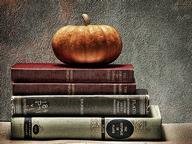4. Down by the Salley Gardens, Easter 1916, The Lake Isle of Innisfree, Sailing to Byzantium, The Wild Swans at Coole, An Irish Airman Foresees his Death, He Wishes for the Cloths of Heaven, The Stolen Child, Leda and the Swan, The Second Coming, The Ghost of Roger Casement, When You are Old
From Quiz W B Yeats Poetry Collection
Answer:
'Down by the Salley Gardens' was published as part of a collection of poems in 1889. Yeats stated that he was trying to recreate a traditional song regularly sung by an old woman who could only remember three lines. It tells the story of a young man who loses his love by being too impatient and has been set to music.
'Easter, 1916' should have a comma, but that would confuse the system. Dating from later in 1916, Yeats commemorates the rising against the British by Irish nationalists, many of who were executed when the rebellion failed. The poem ends with the lines 'Are changed, changed utterly:
A terrible beauty is born'.
The 1888 poem 'The Lake Isle of Innisfree' begins with the lines 'I will arise and go now, and go to Innisfree'. It dates from 1888, and refers to an uninhabited island in a lake (lough) in the northwest of the Republic of Ireland. Yeats remembered seeing it during his childhood and it inspired the poem.
'Sailing to Byzantium' begins with another famous line, 'That is no country for old men', used by Cormac Carthy for his novel 'No Country for Old Men' and the 2007 film by the Coen Brothers based on the novel. The poem was first published in 1927 with the words reflecting Yeats' feelings about growing old.
Dating from 1917, the poem 'The Wild Swans at Coole' was written when Yeats was struggling with his health and was taking solace in the lasting beauty of nature. He was staying at Coole Park, in County Galway at the time.
'An Irish Airman Foresees his Death' was written during the First World War but Yeats delayed publication until after the end of the war as it has some political commentary. As has been mentioned, Ireland was trying to win independence from Britain so there some conflict about whether Irish nationals should fight for Britain. The poem was eventually published in 1919.
The title of 'He Wishes for the Cloths of Heaven' is often given as 'Aedh Wishes for the Cloths of Heaven', as Aedh is the poor young man who wishes he had more wealth to enable his beloved to walk on the finest fabrics. The short poem ends with the line 'Tread softy because you tread on my dreams'.
Written in 1886, 'The Stolen Child' is one of Yeats's earlier poems, first published in 1889. The poem is based on the belief that fairies kidnap human children and tells the story of a young boy being lured away by fairies, probably to his death by drowning.
Yeats composed the poem 'Leda and the Swan' in 1923 based on the Greek myth of the conception of Helen of Troy by the rape of Leda by Zeus in the form of a swan. The language and imagery is quite graphic and Yeats also alludes to the future disasters which lie in wait during the Trojan War.
'The Second Coming' was written by Yeats in 1919 and first published the following year. Although the poem may not be as well known as some of the others, it does contain the well known line 'Things fall apart; the centre cannot hold' the first part of which was used by Chinua Achebe for his 1958 novel. Lines from the poem have been used in many other works, in novels, films and television shows.
Roger Casement was an Irish nationalist who worked for the British government. During the First World War he used his position to recruit prisoners of war to fight for Irish independence. He was hanged as a traitor in 1916. Yeats was fiercely critical of the British actions and 'The Ghost of Roger Casement' is one of the poems he wrote about the incident.
The final Yeats poem in the list is from 1893. 'When You are Old' is addressed to a woman, telling her to look back on her life when she is old and think about those who professed their love for her. He stresses that only one man truly loved her but he refers to that love having been lost. The poem is widely believed to have been written to Maud Gonne, the actress Yeats yearned for throughout his life but without his love being reciprocated.
The incorrect options are 'Death of a Naturalist' by Seamus Heaney, 'Easter Day' by Oscar Wilde, 'Ozymandias' by Percy Bysshe Shelley, 'Preludes' by T S Eliot, 'The Sick Rose' by William Blake and 'London 1802' by William Wordsworth.







 Top 10% Rated Quiz,
Top 10% Rated Quiz,